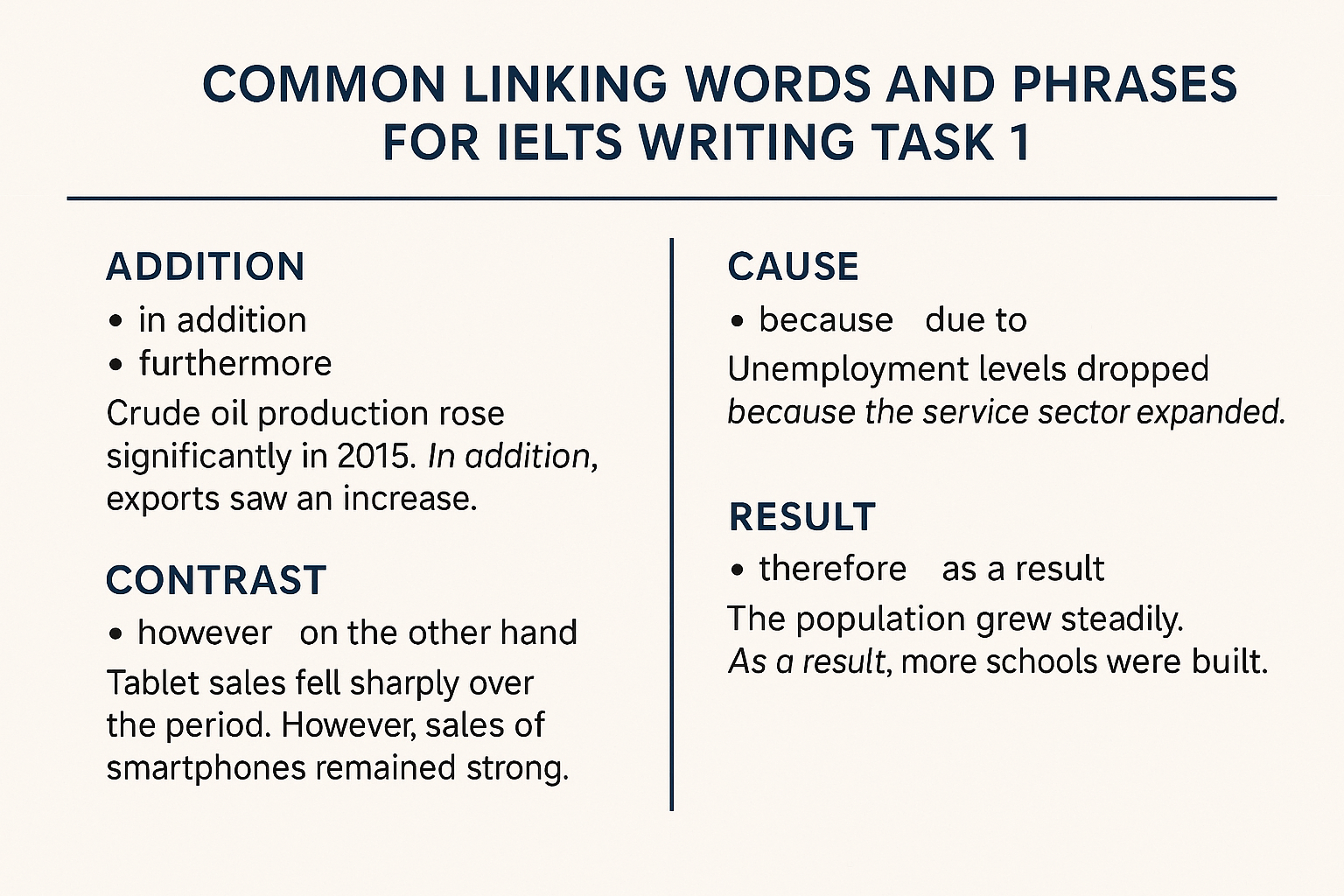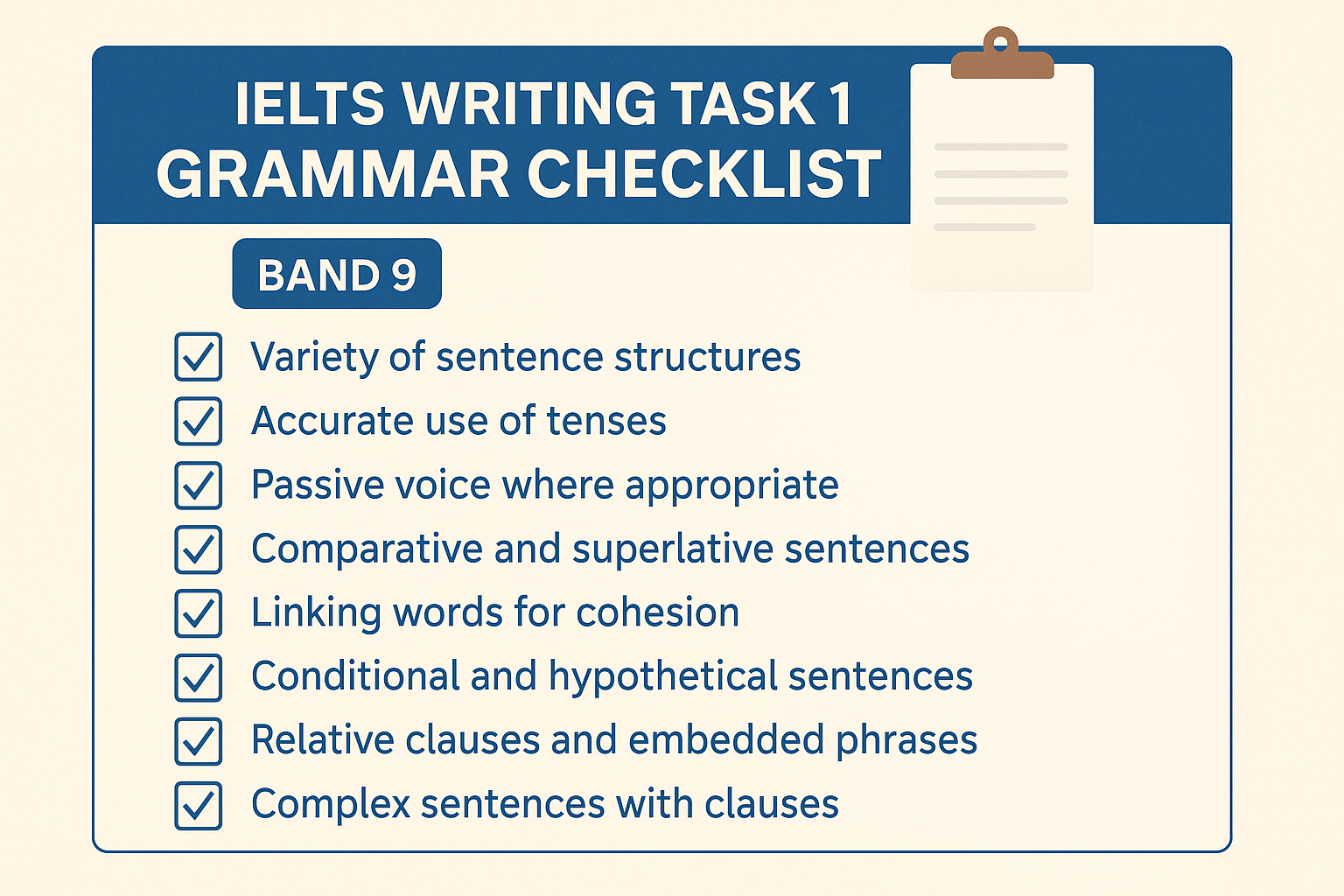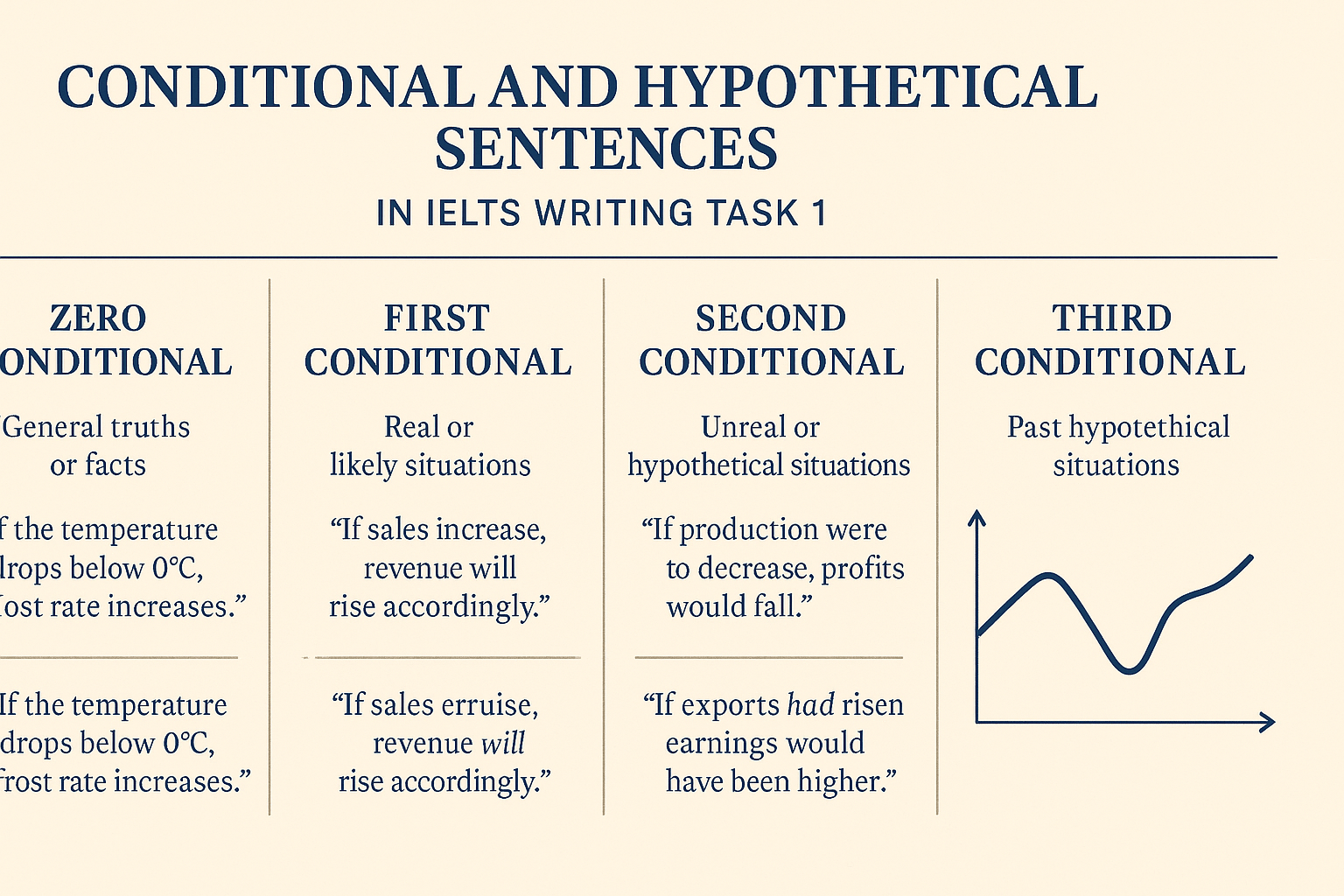- Why Are Linking Words Important in IELTS Writing Task 1?
- Key IELTS Linking Words Task 1 Categories
- How to Use Linking Words for Grammar Coherence
- Common Mistakes with IELTS Linking Words Task 1
- Practical Examples of Linking Words in IELTS Writing Task 1
- Combining Linking Words with Grammar and Vocabulary
- Sample Paragraph Using Linking Words
- Final Thoughts
If you want your IELTS Writing Task 1 report to be clear, logical, and easy to follow, mastering IELTS linking words task 1 is essential. From my experience teaching IELTS students around the world, I’ve found that using the right linking words and phrases not only improves the flow of your writing but also boosts your grammatical coherence — a key scoring criterion.
In this guide, I’ll share the most useful conjunctions and linking phrases that will help you connect your ideas smoothly, making your writing more professional and band-score friendly. For more grammar tips and vocabulary, you can visit my guides on IELTS Writing Task 1 Grammar for Band 7–9 and Vocabulary Complete Guide. And of course, official IELTS resources like the IELTS website, the British Council, and IDP IELTS offer great practice materials too.
Why Are Linking Words Important in IELTS Writing Task 1?
Linking words and phrases are the glue that holds your sentences and paragraphs together. Without them, your writing can seem choppy or disjointed, making it harder for examiners to understand your comparisons, contrasts, and explanations.
Good use of linking words improves:
- Coherence: Logical flow and connection between ideas
- Cohesion: Smooth transition from one sentence to the next
- Clarity: Makes your writing easier to follow
- Formality: Academic tone expected by IELTS examiners
Key IELTS Linking Words Task 1 Categories
Let’s break down the main categories of linking words and phrases you need for Task 1 writing.
1. Addition: Adding Similar Ideas
Use these to add extra information or continue a point.
- and
- also
- as well as
- in addition
- furthermore
- moreover
Example:
The number of students increased in 2015, and it continued to grow in 2016.
2. Contrast: Showing Differences
These words show contrast or opposition between ideas.
- but
- however
- although
- on the other hand
- whereas
- in contrast
Example:
City A’s population increased significantly; however, City B’s population remained stable.
3. Cause and Effect: Explaining Reasons or Results
Use these to explain why something happened or what resulted.
- because
- therefore
- as a result
- consequently
- due to
- thus
Example:
Sales fell due to economic downturn; as a result, profits declined.
4. Comparison: Highlighting Similarities or Differences
These help compare data points.
- compared to
- similarly
- likewise
- in comparison
- whereas
Example:
Compared to 2018, the number of visitors increased in 2019.
5. Sequencing: Ordering Ideas or Events
Useful for describing processes or trends over time.
- firstly
- then
- next
- after that
- finally
- subsequently
Example:
Firstly, data was collected. Then, it was analyzed before the report was published.
How to Use Linking Words for Grammar Coherence
- Don’t overuse one type: Mix different linking words naturally.
- Place linking words appropriately: Beginning or middle of sentences, depending on function.
- Match linking words to the meaning: Use cause/effect words for results, contrast words for differences, etc.
- Use commas correctly after introductory linking phrases.
Common Mistakes with IELTS Linking Words Task 1
- Repeating the same linking words — diversify your vocabulary.
- Using informal or conversational linking phrases like “and then” or “also like.”
- Incorrect punctuation after linking phrases (missing commas).
- Confusing linking words with similar meanings.
Practical Examples of Linking Words in IELTS Writing Task 1
Describing a Trend:
The sales rose steadily in 2019. Furthermore, profits increased by 10%.
Showing Contrast:
The number of students in City A declined, whereas City B saw a significant increase.
Explaining Cause and Effect:
Due to budget cuts, the company reduced its workforce. Consequently, productivity fell.
Combining Linking Words with Grammar and Vocabulary
To reach Band 7 or above, you need not just linking words but also accurate grammar and precise vocabulary. Combining all three creates coherent and polished writing.
For more detailed grammar help, see my IELTS Writing Task 1 Grammar for Band 7–9 guide, and for vocabulary to pair with linking words, check the Vocabulary Complete Guide.
Sample Paragraph Using Linking Words
The number of tourists increased in 2018. Moreover, spending per visitor rose significantly. However, in 2019, visitor numbers declined. This was due to political instability. As a result, revenue fell.
Final Thoughts
Mastering IELTS linking words task 1 is vital for achieving coherence and clarity in your writing. Practice using different types of linking words naturally and correctly. Combine them with strong grammar and vocabulary for the best results.
Remember to also check official IELTS practice materials at the British Council and IDP IELTS websites to see linking words in action.
Good luck with your IELTS preparation!





